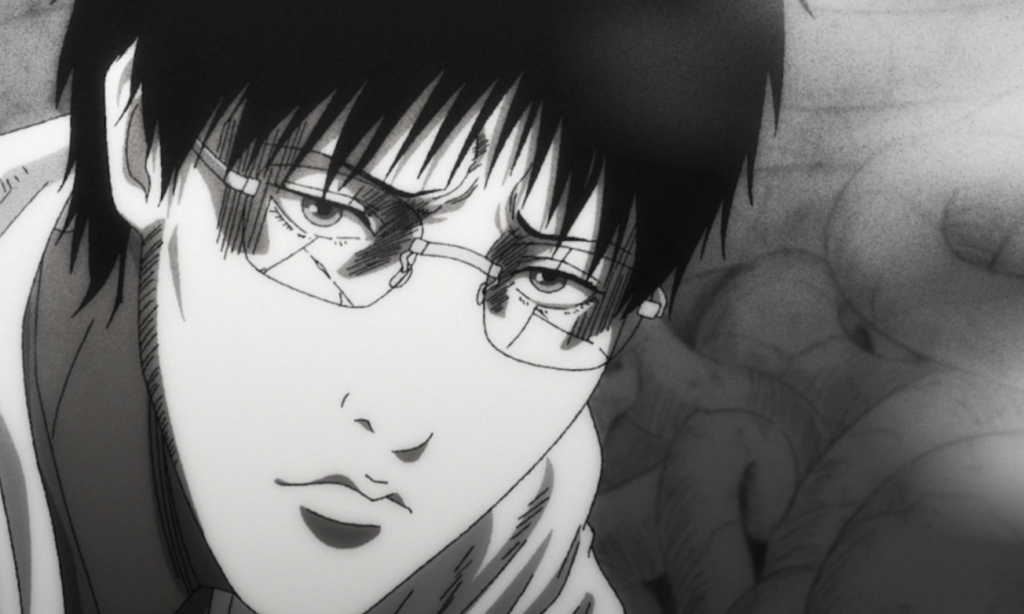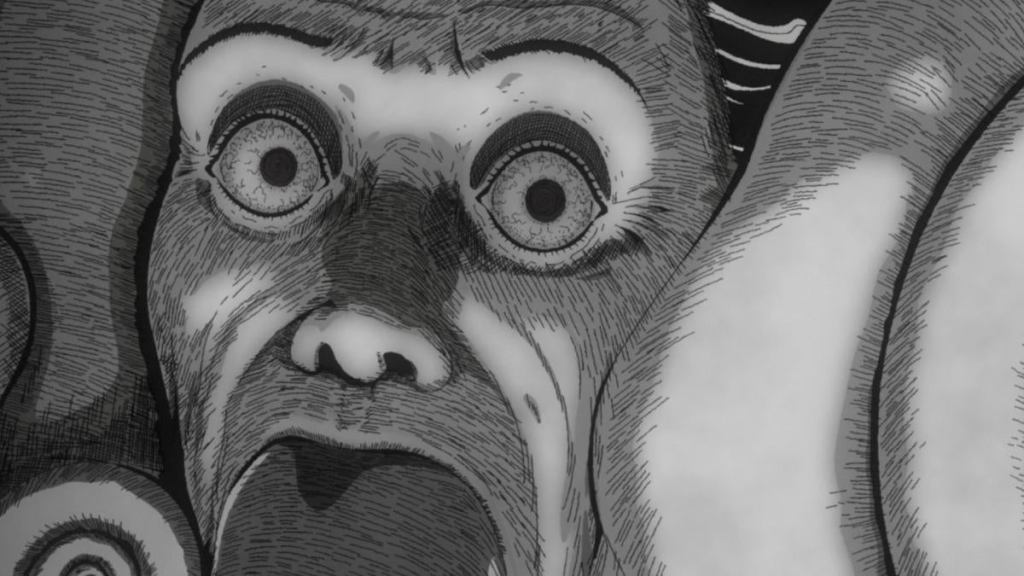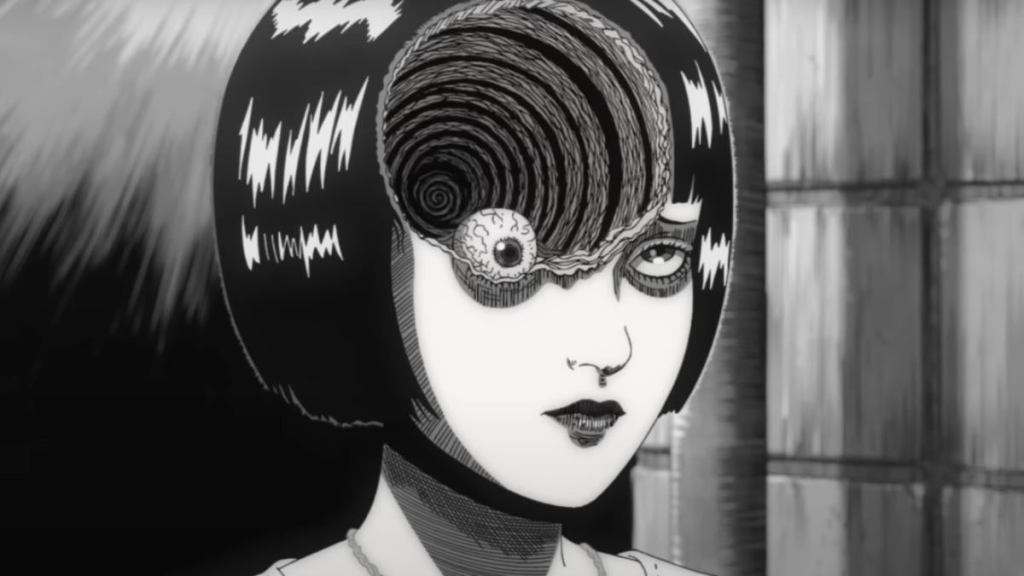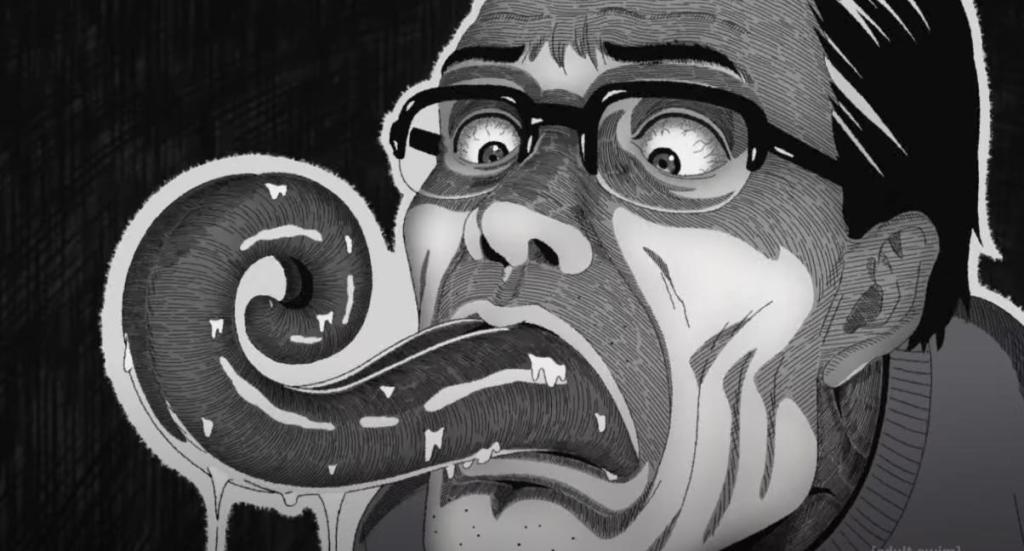The time has come. The fourth and final episode of Adult Swim’s Uzumaki has arrived and it is now time to look at what didn’t work, what worked, and what could have been done to ultimately save the Junji Ito anime adaptation that many fans believed didn’t “live up to the hype.” Uzumaki is a series that took years to develop and the behind-the-scenes controversies became revealed thanks to an executive producer on the series, Jason DeMarco. The anime adaptation is one that makes for such an interesting case study that now is the perfect time to dissect it, especially during the spooky season as Halloween approaches.
Videos by ComicBook.com
For those who might not be as familiar with Uzumaki as others, it is often considered one of the greatest works by horror creator Junji Ito. The story itself focuses on a mountain town cursed by an obsession with spirals. On paper, the concept sounds almost comical, with people being transformed into snails, roaming bands of miscreants creating tornados beneath their feet, and people dying by curling themselves up into pottery. In practice, the original manga was able to send chills up readers’ spines thanks to the way Ito told the story via his unique art style and writing. Unfortunately, the same couldn’t necessarily be said for the anime adaptation from Adult Swim and Studio Drive.

What Went Wrong
To focus first on the elephant in the room, the art employed in the four-episode mini-series would take wild swings in quality depending on the episode. Many anime fans had waited years to see Uzumaki finally arrive on the Cartoon Network programming block, and while the premiere episode lived up to the hype, subsequent episodes garnered attention for all the wrong reasons. It was clear that changes were being made to get the series out the door, as even DeMarco confirmed on a now-deleted social media post, and that showed. Episode two specifically had scenes going viral as they paled in comparison to Uzumaki’s initial offering and that’s putting it lightly according to many viewers.
When looking at issues that result in animation, from an outsider’s perspective, it is difficult to make recommendations as to what could have been done differently, especially in Uzumaki’s case. Saying “they could have taken more time” after five-plus years of work on the mini-series doesn’t seem like a possible recommendation as this was a project that needed to be pushed out in some form at this point. DeMarco confirmed that they had several options when it came to what could have been done, including only releasing the first episode and perhaps, that might have been the best route to take. Series like 1997’s Berserk were made as something of a promotion for its original manga and perhaps Uzumaki could have been the same. There would be a sense of disappointment that it only received a thirty minute anime adaptation but what a strong thirty minutes that premiere was.

Uzumaki’s Pacing
I want to preface this section by saying that I personally am a giant Junji Ito fan and the problems I found to stick with me the most in Adult Swim’s Uzumaki weren’t the animation. Granted, the animation had its flaws and quirks but or me, it came down to the pacing of the series. Of the four episodes that were released, episode three was the one where the series went wrong, even though the second installment is the one that received the lion’s share of attention due to “poor animation.” Episode two was able to deliver on many of its, arguably, speedy stories in the anime adaptation while three buckled under the weight of trying to push too much out in one chunk.
Uzumaki is the perfect story for Junji Ito’s sensibilities as a “master of horror.” It has an overarching plot that connects several mini-stories in the cursed town under one umbrella and the manga is wildly successful in threading the needle. In the anime, there are many instances where creatures, characters, and plot points are almost thrown in as Easter Eggs rather than receiving the time that was necessary to make them work. The original manga would let readers sit and perculate on the unbelievable horror of this, on paper, ridiculous scenario. There’s perhaps no greater example of a story “lost in translation” here than “Jack In The Box”.
In Uzumaki’s second episode, we are introduced to Mitsuru Yamaguchi, a boy who gets a thrill from jumping out and scaring people. Having an eye for protagonist Kurie, Mitsuru attempts to scare her one time too many and finds himself accidentally falling beneath the wheels of a car. He later returns as a twisted “Jack In The Box” thanks to the spiral curse and during one of the most effective stories in Uzumaki’s manga, horrifically stalks Kurie from beyond the grave.
In the anime adaptation, Mitsuru is established while still in the land of the living but then anime audiences get next to no time to see the horror of what he has become and how the curse twisted his decaying form. He simply appears in the final moments of episode three, immediately falling over in a jump scare that isn’t as effective as the creeping horror of the manga’s time with the character. It’s made worse by him jumping into frame seconds following a previous monster bursting forth from the row house that Kirie and her family found shelter within. There are other examples of this throughout Uzumaki but this felt like the most prominent of them all and reflected the work that the Adult Swim series could have hashed out before airing.

Uzumaki Done Right
There’s simply no easy answer to break down what could have made Uzumaki a success. The easiest way to explain it would be to just take the same animation and pacing used in episode one and stick to that in the following three. However, considering what anime fans have seen from Jason DeMarco’s deleted social media posts, this was far from an easy task. Bearing this in mind, there are two potential routes for how this could have walked away as the best Junji Ito anime adaptation.
To start, Adult Swim could have simply released this as an hour-long project, cutting the fat from many of the storylines and reallocating resources to make sure that the runtime stayed on an even keel. On the flip side, while five years was quite the wait, perhaps even more time was needed, and creating more installments for the mini-series would have helped the story flow better and made viewers overlook the issues in animation, even if this caused a much longer production. We’ll never know if the right decision should have been to release all the episodes or to only have shared the premiere though there are still bits and pieces to enjoy in episodes two through four.

What Did Uzumaki Get Right?
I would be remiss if I didn’t discuss what the Adult Swim & Studio Drive collaboration did right. As mentioned earlier, the first episode was one that got the assignment, finally doing the impossible and translating Junji Ito’s style to the small screen. Even with the criticisms of the following episodes, there were story beats and animated moments that were pulled off successfully. The story of the pregnant women in episode three, searching for blood for their unborn children, was quite skin-crawling and worked well at creating a horrific atmosphere straight from the source material.
The overall sense of looming dread and terrifying atmosphere was also captured throughout much of the mini-series, despite the animation hiccups. Colin Stetson’s soundtrack was an inspired choice for this project and we have to imagine that even with the backlash many had to the adaptation, the spooky tunes will go down in anime history as some of the best tracks in the medium. Uzumaki is a flawed adaptation at the end of the day but it’s one that still has diamonds in the rough.

Keep Going Junji Ito
Keeping all this in mind, Junji Ito anime adaptations need to continue in the future. Uzumaki’s first episode proves that they can be done and done well, with Hollywood getting in on the horror train with three upcoming live-action movies. Ito’s art style is one that is quite difficult to pull off as shows like The Junji Ito Collection and Maniac: Japanese Tale of The Macabre prove, but if Adult Swim and Studio Drive could do it in Uzumaki’s premiere, then it’s worth revisiting with some of the master of horror’s other tales.
It’s hard not to ultimately feel sad about Uzumaki’s anime not living up to expectations but there are lessons learned and good things that came out of the series, despite its flaws. While it ultimately might not become the pinnacle anime horror classic we had hoped for, the Adult Swim series highlighted why Ito is a master of his craft. Here’s to hoping that this is far from the end of trying to do Junji Ito right in the anime world as viewers still need anime horror for these spooky times.
Want to stay updated on anime and the horrors that lie within it? Follow along with Team Anime on ComicBook.com for the latest updates on Junji Ito and hit me up directly @EVComedy to talk all things comics and anime.








